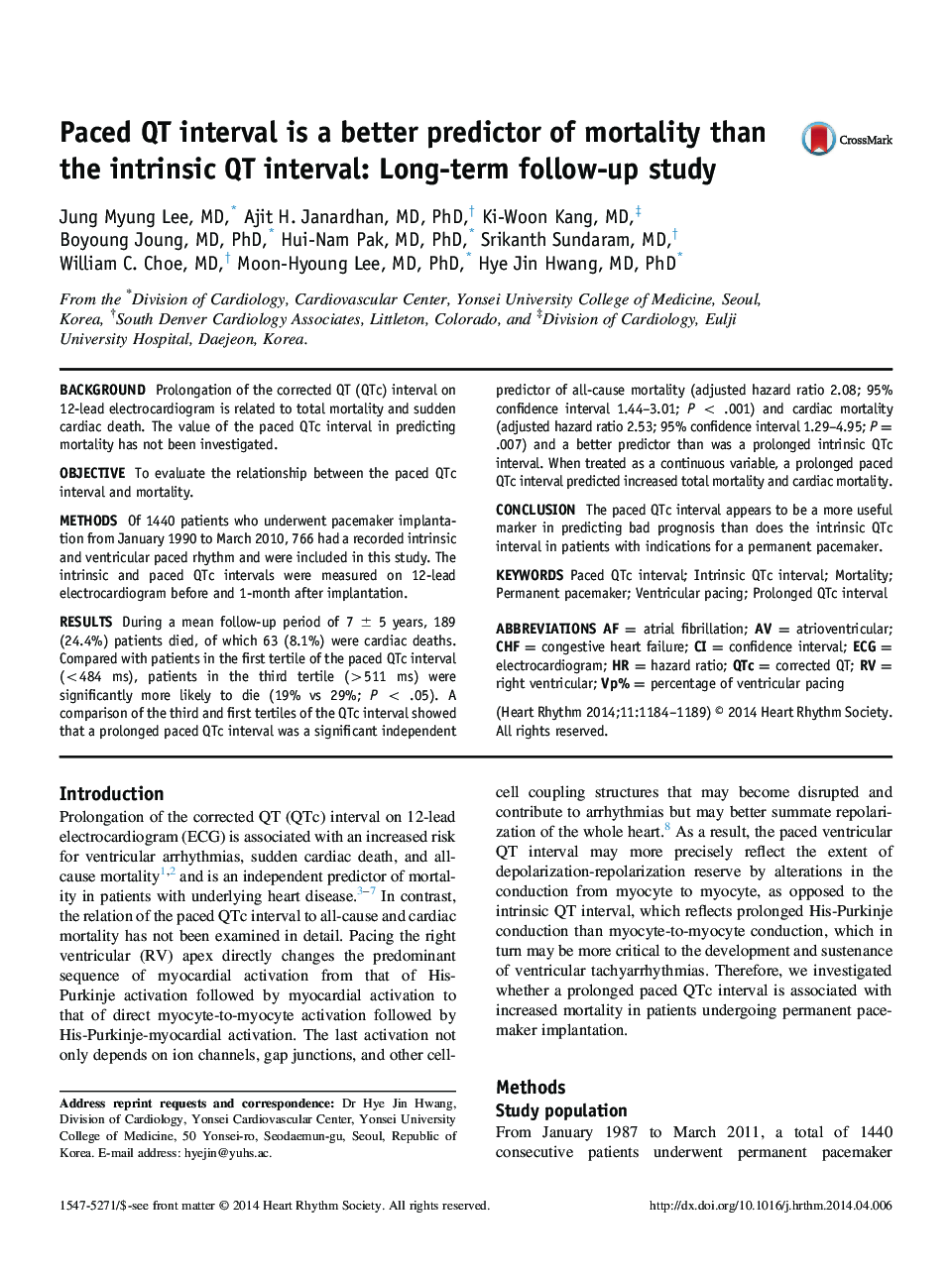| Article ID | Journal | Published Year | Pages | File Type |
|---|---|---|---|---|
| 2921997 | Heart Rhythm | 2014 | 6 Pages |
BackgroundProlongation of the corrected QT (QTc) interval on 12-lead electrocardiogram is related to total mortality and sudden cardiac death. The value of the paced QTc interval in predicting mortality has not been investigated.ObjectiveTo evaluate the relationship between the paced QTc interval and mortality.MethodsOf 1440 patients who underwent pacemaker implantation from January 1990 to March 2010, 766 had a recorded intrinsic and ventricular paced rhythm and were included in this study. The intrinsic and paced QTc intervals were measured on 12-lead electrocardiogram before and 1-month after implantation.ResultsDuring a mean follow-up period of 7 ± 5 years, 189 (24.4%) patients died, of which 63 (8.1%) were cardiac deaths. Compared with patients in the first tertile of the paced QTc interval (<484 ms), patients in the third tertile (>511 ms) were significantly more likely to die (19% vs 29%; P < .05). A comparison of the third and first tertiles of the QTc interval showed that a prolonged paced QTc interval was a significant independent predictor of all-cause mortality (adjusted hazard ratio 2.08; 95% confidence interval 1.44–3.01; P < .001) and cardiac mortality (adjusted hazard ratio 2.53; 95% confidence interval 1.29–4.95; P = .007) and a better predictor than was a prolonged intrinsic QTc interval. When treated as a continuous variable, a prolonged paced QTc interval predicted increased total mortality and cardiac mortality.ConclusionThe paced QTc interval appears to be a more useful marker in predicting bad prognosis than does the intrinsic QTc interval in patients with indications for a permanent pacemaker.
